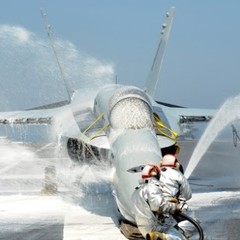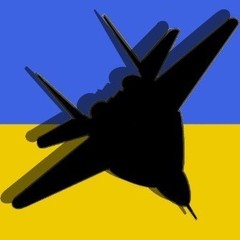-
Posts
8349 -
Joined
-
Last visited
-
Days Won
21
About Northstar98
- Birthday 10/06/1998
Personal Information
-
Flight Simulators
Current: DCS World, Falcon BMS, IL-2 GB (Bodenplatte, Kuban, Stalingrad).
Previously: Strike Fighters 2 (Base, NA, EU, EXP2), IL-2 1946, MSFSX-A
Other: Command Modern Operations, Cold Waters, Kerbal Space Program, Orbiter 2016 -
Location
White Forest
-
Interests
Ships, Aircraft, Spacecraft, Military Research, Electronics, Martial Arts
Recent Profile Visitors
35240 profile views
-
With radomes I wish map developers would start including them as a hollow static object, leaving a flat base/pedestal/platform etc so we can place functional units. This would mean that EWR sites can be the part as opposed to just looking the part.
-
Not to detract from the very nice update, but there are a couple of issues with the SA-2 site that i want to highlight. Firstly, there doesn't seem to be any revetments for placing search radars and their associated electronics trailers, nor does there seem to be any ready areas for transloaders. If what's depicted in this image were to be recreated then that would be essentially perfect (though the central area is typically rectangular in Germany, If the above image were to be recreated (though typically the central revetments are comprised of numerous straight ones in Germany), that would be perfect. Secondly, the revetments themselves don't look that accurate - real sites have essentially simple earth berms and SA-2s typically have at least 3 openings (as depicted in the above image). The central area for the guidance radar and associated hardware is also typically rectangular constructed out of 2 sets of parallel berms. In the screenshot in the OP, the berms are the wrong way round. This is somewhat puzzling because the Syria map already has more accurate launch revetments (they could just do with a retexture to make them suitable for Germany and maybe include some very short grass). For example, here's an SA-2 site near the large Wittsock bombing range, you can clearly see that the central area is rectangular in shape, constructed from 2 sets of parallel berms. You can also see that the launcher revetments are more similar with the image above and that there are additional revetments for search radars etc. Secondly, the roads connecting the various elements, IRL these would've been more austere with much more mud/sand - the area between the fences in the screenshot captures this look very well - if it could be applied to the various roads around the site, that would be excellent and would make the site look more authentic.
-
Okay, but this doesn't actually answer my question. The point I was making is why would there necessarily be a difference between the uplink in a TVM missile vs a command-guided missile and why would an illuminating waveform necessarily be different in a SARH set up vs a TVM set up. Yes I'm sure you can name examples where they are (APG-73 for instance, though that's fairly out of scope for a discussion mostly centred around systems that don't require continuous illumination and can simultaneously engage multiple targets), but that doesn't actually answer my question. Essentially, what I'm asking is, is could you create a command-guided + SARH set up, using the exact same waveforms for the uplink and illumination as a command-guided + TVM set up. Especially if we're dealing with electronically scanned arrays and missiles that work with interrupted illumination (the Sparrow obviously not being one of them). If the answer is yes, then the only thing that's relevant are what certain systems actually do, which is probably going to be harder to find. Otherwise a system merely being TVM doesn't necessarily convey that track or launch warnings should or shouldn't be detectable to a certain ELINT system (though the prevailing narrative online is that they shouldn't, often said devoid of explanation). Well it was an inference. A reason why is what it describes the antenna as - it uses the term "TVM antenna" instead of "uplink antenna" - Patriot missiles require an uplink during all phases of flight and it seems very odd for it to have a separate antenna for the uplink but only for the TVM phase of flight. This also circles back to my point about the uplink during command-guided flight hypothetically being no different to the TVM phase of flight and so why command-guided + SARH or command-guided + TVM or even just purely command-guided might not necessarily convey any advantages or disadvantages, assuming they can all be implemented in a similar way. I also made the assumption that it uses 1 array for search/track/uplink and another for illumination, because as far as I can tell, that's the more common set up (even if the uplink is on a subarray), than having a wholly separate antenna for an uplink (at least for these modern radar systems) - the only one I can name is CAMM/Sea Ceptor. That's why I brought up SM-2 (though I utterly failed to elaborate on it - apologies) as that's an example as is CEAFAR-equipped ESSM-firing platforms. These illumination antennas are also smaller than the main array, usually because they operate at shorter wavelengths, they also don't don't necessarily need to track the target themselves as the main array is already doing that. I'm not sure if that's the case with AN/MPQ-53 (as maybe the missile can use G-band illumination) in any case the size of the elements on the main array vs the TVM array appear to be same in images. Though that's obviously not to say that there aren't systems that do combine everything under 1 radar system - APAR for instance handles all tasks, including illumination. The 5N63/30N6 series and 3R41 can handle all tasks as well (though those have a dedicated search radar, though these radars are nevertheless capable of independent search, though more limited).
-
Well, in that case - its incorrect, all versions of the SA-10B (including the S-300PS we have and its accompanying 5V55R) are command-guided w/ terminal TVM. The SA-N-6 should fire the 5V55RM (and AFAIK has never fired the command-guided+SARH 5V55K from the S-300PT). EDIT: Actually, no that's wrong - the 5V55K is not command-guided+terminal SARH, it's just command guided - no version of the S-300P employs SARH anywhere, only the S-300V series. The S-300P uses missiles that are either purely command-guided (S-300PT) or command-guided+terminal TVM (S-300PS/PM(U)-series and F)). Though the 5N63S RPN [Flap Lid-B] and the S-300PS is allegedly backwards compatible with the 5V55K, which could be further evidence that the uplink in TVM could be similar to the uplink for command-guided versions. And while this is all speculative, why would TVM make any difference compared to command-guided and SARH? From a radar perspective, the exact same thing is happening, just what generates the steering commands is with the fire-control radar, not the missile. And for the uplink, how would it be different (if at all) between the command-guided phase and the terminal TVM phase? Of course I have absolutely no idea about any of the waveforms the 3R41 Volna (SA-N-6), 5N63S RPN (SA-10B) or 30N6-1 [SA-N-20] produce, but right now I don't really have anything to suggest that they differ between whatever waveform is used to provide for SARH and which is used to provide TVM (at least as far as target illumination goes, of course the TVM must also include a missile uplink alongside whatever illuminating waveform). Unfortunately apart from pontificating there's not much I can do to determine what is what, but lets say for argument's sake that from a strictly target illumination perspective, the waveform is the same and that the same waveform is used to uplink steering commands in both phases. The way I see it (and barge of salt at the ready): If (and a particularly big if) the RWR can detect the uplink and determine if the aircraft is being tracked, then provided by brain ooze above is correct, then a launch warning should happen the moment the missile is launched, regardless of whether the missile is command-guided + terminal SARH or command-guided + terminal TVM. If the RWR can only detect when the aircraft is illuminated by whatever waveform the missile's seeker tracks (which I'm assuming is true for both TVM and SARH, there's no reason to suggest these must necessarily be different - you can use the same seeker in both set-ups, the only difference is the information from the missile's seeker gets processed and steering commands are generated locally by the missile in SARH and data linked back to the fire-control system, processed and steering commands data linked back to the missile in TVM), then you'd only get a launch warning once that starts. And obviously if it can detect neither then you wouldn't get a launch warning at all. And this kind of discussion is also relevant to Patriot (which I assume is interrupted CW, given that it's supposedly transmitted from a separate array on the same radar, or at least that's what FM 44-15 implies - it describes the smaller, circular array as a "TVM array" and states that in the TVM phase a "special waveform is transmitted that illuminates the target" and then describes this waveform as "the TVM waveform" so presumably it's transmitted by this array) and the SM-2 series (which have a terminal SARH phase, though in that case the waveform is CW, somewhere in the J-band, provided by a different radar).
-
Yep, completely true - I'm not aware of any changes in the waveform of the 5N62 when tracking a target or when firing a missile and I even believe missiles can be guided to targets in any of its modes (either monochromatic CW, or the phase or frequency modulated modes). Hell, I'm pretty sure its the same waveform in its acquisition modes as well (though there'll be a change in dwell time there). The only other thing is the missile downlink (which I assume is telemetric or just to provide operators with an indication of how the intercept is proceeding/time to impact etc), but I'm not confident RWRs will be able to detect this (it would likely depend on the radiation pattern of the downlink transmitter on the missile and its power). Rest I agree with, though looking at the manual, it seems the only SARH system that provides launch warning is the SA-6 - everything else is command guided (or at least is command-guided at launch and in the midcourse phase with the SA-10 and SA-N-6, then again, the system doesn't detect the SA-N-20 according to the manual, I'm not sure why if it can detect SA-10 and SA-N-6).
-
Ah, I knew about TCS but didn't realise the dome was as well. In that case, no external changes from the existing A AFAIK.
-
They did mention a few in a newsletter, here's one mentioning the Shrike, here's one mentioning the Bullpup and GBU-8 - in the 2nd note the wording "we are currently developing a new variant of the AGM-12 Bullpup..." , I believe the AGM-45B Shrike is also on ED (and that's why it isn't in) etc.
-
Behind the cockpit. 1990s+ F-14A: 1980s "Early" F-14A: All I can say is on the HB Discord, HB team members are saying they'll be added when ED develops them. I believe the same is true for the CM-400AKG ALBM on the JF-17 - Deka are again waiting on ED to implement the weapon.
-
Well, I was under the impression ED had taken over weapons development (which is a good thing as it means aircraft share the same weapons), though would've thought it would be on HB to provide artwork (see AIM-54, AIM-7Es etc).
-
Right now its only the RWR and the accompanying in-cockpit changes for it. Both As are the same block and have the same engines. Unfortunately there aren't any external changes aside from the removal of the GPS dome. Weapons like the AIM-9G and H are on ED.
-

No F-14A-135GR Early listed in mission editor
Northstar98 replied to Magot's topic in Bugs and Problems
Just FYI, the aircraft is depicted as more of a mid-1980s to mid/late-1990s version, so those dates aren't appropriate for it. The previous A is more mid/late 1990s+ and the B is late 1980s+ - whether historical mode reflects that I haven't tested yet. -
Yep, completely agree. From what I've seen Germany seems to have a lot of trivial details which only add eye-candy but do nothing else (they can't be used as a gameplay element), but quite a number of areas that do genuinely have gameplay elements and would make the map more accurate and more useful get omitted/overlooked and even some that are in aren't modelled all that accurately.
-
Hi everyone, While the Kh-25MR appears fine prior to launch, after launch it transforms to appear as a Kh-25MP/MPU. It looks like line 570 of CoreMods\aircraft\AircraftWeaponPack\kh25_29_family.lua is to blame, "model = X-25MP" should instead be set to X-25MR and changing this line to be as such fixes the issue.









.thumb.jpeg.487121b3f380a45a1c27172994fa48bd.jpeg)

